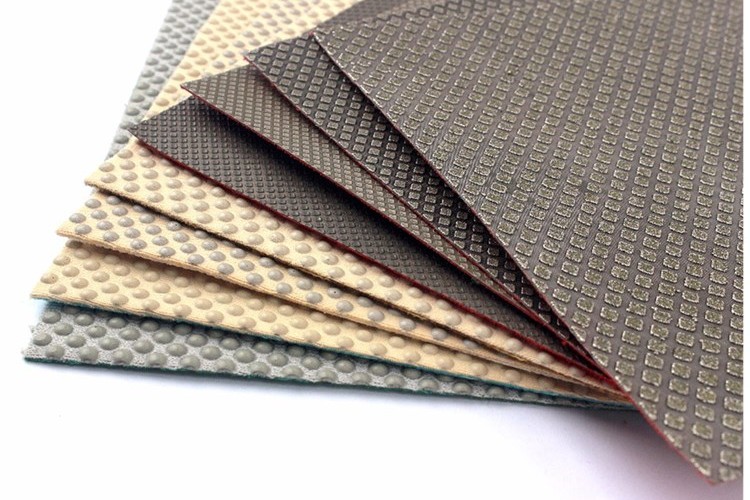Polishing a tile is an essential process that not only enhances the beauty of your tile, but also its functionality. Polishing a tile creates a smooth, reflective surface that brightens any space and makes it easier to clean.
Polishing Method
There are two main methods for polishing tiles: manual grinding and machine polishing. Each method has its own advantages and is suitable for different situations.
1. Manual grinding
Manual sanding is a hands-on method that requires the use of basic tools like sandpaper or a handheld sander. This method is ideal for smaller areas or for those who prefer a more controlled polishing process.
Manual grinding steps:
- Initial Roughening: Start by roughening the tile surface with 120 grit sandpaper. This step helps remove any existing imperfections and prepares the surface for a finer polish.
- Progressive Sanding: Use progressively finer grit sandpaper, such as 200 and 400. Each grit sandpaper should be used to further sand the surface. Make sure to sand evenly to avoid uneven spots.
- Cleaning: After sanding, clean the tile surface with water to remove dust and debris. This step is critical to ensure that the polish adheres properly in subsequent steps.

2. Machine polishing
Machine polishing is a more efficient method, especially for larger areas or commercial applications. It usually requires the use of a specialized grinder equipped with a variety of polishing pads.
Machine polishing steps:
- Preparation: Before you begin, clean the tile surface thoroughly to remove dust, oil and other debris. A clean surface is essential for effective polishing.
- Grinding: Start by abrading the surface using a coarse polishing pad, such as a 50 grit polishing pad. This initial step helps remove larger imperfections and prepares the tile for a finer polish.
- Progressive Polishing: After grinding, switch to finer polishing pads, such as 100 and 200 grit. Each polishing pad should be used successively to achieve a smooth, shiny surface. Make sure to maintain consistent pressure and motion to avoid uneven polishing.
- Final Cleaning: Once the desired polishing effect has been achieved, clean the tile surface again to remove any residue from the polishing process.

Polishing Tile Notes
1. Regular care
After polishing, the surface of the tile becomes smooth and beautiful, but it is also more likely to accumulate dust, oil and other debris. Regular cleaning is essential to maintain the brightness of the tile and prevent dullness.
Recommended cleaning method:
- Daily Cleaning: Use a soft cloth or mop to wipe the tiles regularly. A mild, pH-neutral cleaner is ideal for maintaining the shine without damaging the surface.
- Avoid Abrasive Cleaners: Steer clear of harsh chemicals or abrasive cleaning tools that could scratch or damage the polished surface.
- Spot Cleaning: If there is a spill or stain, remove it immediately to prevent it from setting in. Use a damp cloth and mild detergent to remove any stains.
2. Prevent Collisions
Polished tiles generally have a more fragile surface than unpolished tiles. As a result, they are more susceptible to bumps, drops, and other impacts that can cause them to chip or crack.
Tips to prevent damage:
- Use rugs: Place rugs or mats in high-traffic areas to reduce the risk of impact and wear on tile surfaces.
- Furniture Pads: When moving furniture, use pads or coasters under the legs to prevent scratching or denting the tiles.
- Handle Heavy Objects with Caution: Use caution when handling heavy objects near polished tile. Avoid dropping or dragging items onto the surface.
3. Avoid acidic substances
Polished tiles are not resistant to acidic substances, which can corrode or damage their surface. In order to maintain the integrity of the tiles, contact with such substances must be avoided.
Notes:
- Avoid Using Acidic Cleaners: Do not use cleaners containing acid, such as vinegar or lemon juice, as they will damage the polished surface.
- Be Careful with Food and Drinks: Spills of acidic food or drinks (such as citrus juice or soda) should be cleaned up immediately to avoid damage.
- Use a Neutral Ph Cleaner: Choose cleaning products designed for polished surfaces and make sure they are pH neutral to protect the surface.
Advantages of Tile Polishing
1. Better aesthetics
One of the most significant benefits of tile polishing is the improved aesthetics. Polished tiles have a smooth, fine, and blemish-free surface, creating a visually pleasing effect that enhances the overall look of any room.
- Visual Appeal: Polished tiles reflect light well, adding brightness and depth to a space. This reflective quality can make a room feel larger and more inviting.
- Elegant Finish: The surface of polished tiles is smooth and bright, exuding a sense of luxury and sophistication, enhancing the overall class of the room. Whether used in a kitchen, bathroom or living room, polished tiles make a stunning focal point.
- User Satisfaction: Beautiful environment brings a pleasant life experience. The aesthetic enhancement brought by polished tiles can make users feel more comfortable and satisfied in the space.
2. More practical
In addition to their aesthetic appeal, polished tiles also have practical advantages that increase their usability in daily life. Polished tiles have a flat and smooth surface and have many functional advantages.
- Easy to Clean: The smooth surface of polished tiles effectively prevents the accumulation of dirt and grime. This feature makes cleaning easier and more efficient as spills and stains can be wiped up with minimal effort.
- Comfort Underfoot: Polished tiles provide a comfortable walking surface. Its smooth surface reduces discomfort when walking barefoot, making it a great choice for areas where people frequently walk, such as kitchens and living rooms.
- Durability: Polished tiles generally resist wear and tear more than unpolished tiles. The polishing process helps seal the surface, making it less susceptible to stains and moisture, extending the life of the tile.














